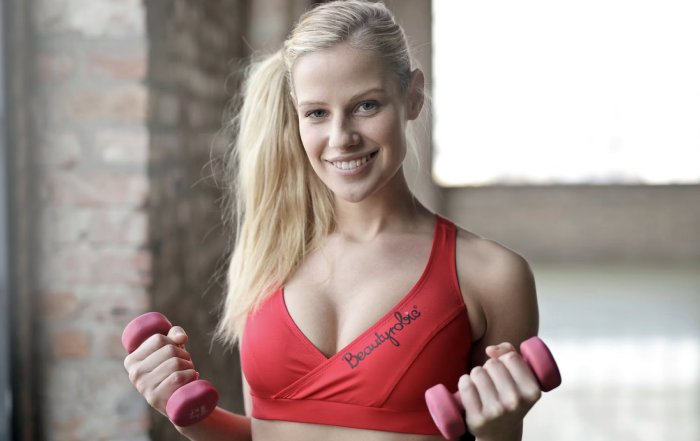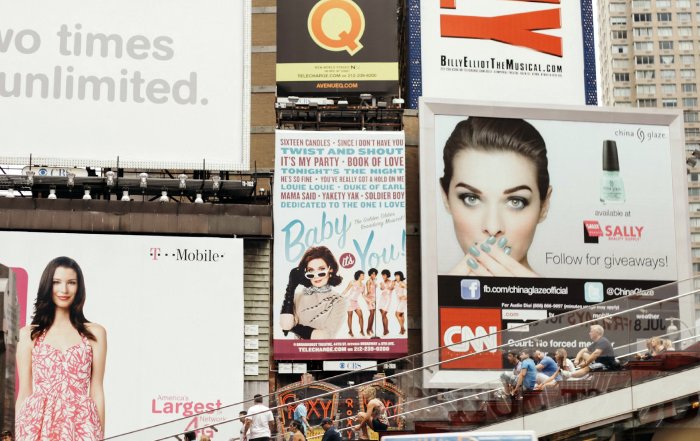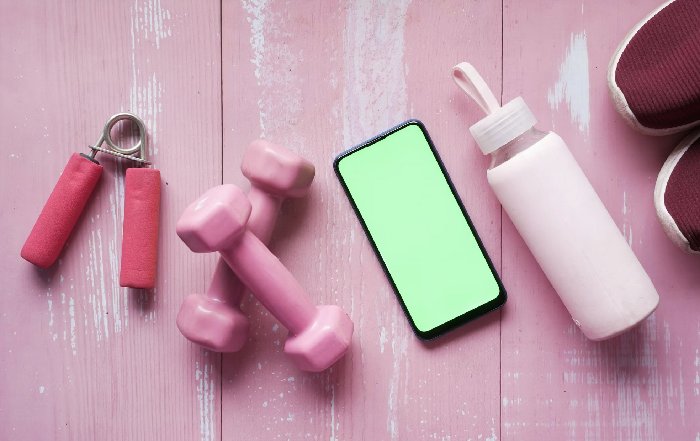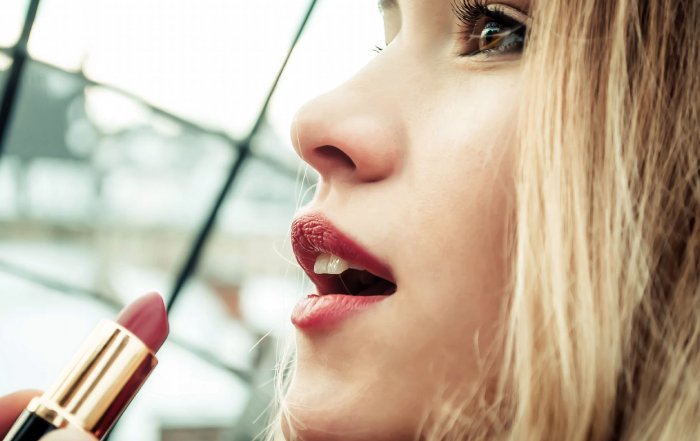Fitness Habits That Support Healthy Skin in 2025
In 2025, as beauty, wellness, and performance converge more closely than ever, the connection between daily fitness habits and healthy skin has become a central focus for the global audience of BeautyTipa. Across markets from the United States and United Kingdom to South Korea, Japan, Germany, and Brazil, consumers are no longer satisfied with short-term fixes or purely cosmetic solutions; they are looking for routines and lifestyles that integrate exercise, nutrition, mental wellbeing, and advanced skincare science into a coherent strategy that delivers visible, long-lasting results. Within this context, understanding precisely how movement, training intensity, recovery, and environment shape the skin's appearance and resilience has become a critical element of modern beauty and wellness planning, and it is an area where BeautyTipa is committed to offering evidence-informed, practical guidance that readers can translate into daily action.
The Science Linking Exercise and Skin Health
Dermatologists and exercise physiologists increasingly agree that regular physical activity exerts a profound influence on skin biology, particularly in relation to circulation, collagen maintenance, and inflammatory balance. Research shared by organizations such as the American Academy of Dermatology explains how increased heart rate during moderate exercise improves blood flow, delivering oxygen and nutrients to the skin while helping carry away metabolic waste products; readers can explore how circulation supports skin health by reviewing medical insights from Mayo Clinic. This improved microcirculation, when supported by consistent routines rather than sporadic intense efforts, appears to support a more even complexion, enhanced radiance, and better support for the skin barrier over time.
At the cellular level, exercise can influence mitochondrial function and oxidative stress, two factors that play a central role in the ageing process. Studies highlighted by institutions such as the National Institutes of Health show that regular, moderate aerobic activity may help modulate oxidative damage and support repair mechanisms, which is critical for maintaining elasticity and reducing the visible impact of environmental aggressors such as UV radiation and pollution; those interested in the broader health context of exercise can review evidence-based overviews at World Health Organization. For the BeautyTipa community, this means that well-structured training plans are not only about body composition or cardiovascular health but also about preserving a youthful, resilient skin structure well into later decades of life.
Cardio, Strength, and Flexibility: Different Paths to Glowing Skin
Not all forms of exercise affect the skin in the same way, and readers across Europe, Asia, North America, and beyond are increasingly sophisticated in tailoring their fitness regimes to their beauty and wellness goals. Aerobic activities such as brisk walking, jogging, cycling, and dance-based workouts elevate heart rate and boost circulation, which can give the skin an immediate post-workout glow while supporting long-term vascular health. Guidance from Harvard T.H. Chan School of Public Health notes that regular cardiovascular training is associated with improved endothelial function and metabolic balance, which indirectly supports skin clarity and tone; those who wish to understand the metabolic dimension in more detail can consult resources from Harvard Health Publishing.
Strength training, whether in the form of free weights, resistance bands, or bodyweight exercises, plays a crucial role in maintaining muscle mass and structural support beneath the skin, especially for individuals in their 30s, 40s, and beyond. As muscle tone improves, the skin can appear firmer and more lifted, particularly in areas such as the arms, legs, and abdomen. Organizations like The American Council on Exercise emphasize that well-designed resistance programs support hormone balance, insulin sensitivity, and body composition, all of which influence the hormonal and inflammatory environment that shapes conditions like adult acne, rosacea, and premature ageing; readers can learn more about the systemic benefits of resistance training via ACE's educational resources.
Flexibility and mind-body practices such as yoga, Pilates, and tai chi, widely embraced in markets from India and Thailand to Scandinavia and North America, contribute to skin health primarily by modulating stress and supporting lymphatic flow. Chronic stress elevates cortisol levels, which can impair barrier function, increase sebum production, and aggravate inflammatory skin disorders. Institutions such as Cleveland Clinic highlight how regular yoga and breathing practices help reduce perceived stress, improve sleep quality, and lower systemic inflammation, all of which are beneficial for individuals prone to flare-ups; those interested in the medical perspective on stress reduction can explore Cleveland Clinic's wellness insights. For BeautyTipa readers, integrating a blend of cardio, strength, and flexibility work into weekly routines offers a comprehensive way to protect both skin and overall wellbeing.
Sweat, Detox Myths, and the Skin Barrier
One of the most persistent misconceptions in global beauty communities is the belief that sweating during exercise "detoxifies" the skin in a direct and substantial way. While perspiration does help regulate body temperature and can remove small amounts of waste products, the primary detoxification organs remain the liver and kidneys, as explained by organizations such as Johns Hopkins Medicine; those interested in the body's detoxification systems can learn more from Johns Hopkins' educational articles. The real relevance of sweat for skin health lies in its interaction with the microbiome, the barrier, and the potential for irritation or breakouts if post-workout care is neglected.
Sweat is composed mainly of water and electrolytes but can mix with sebum, dead skin cells, and environmental pollutants on the surface, creating a film that may clog pores or encourage bacterial overgrowth, particularly in hot, humid environments such as Singapore, Brazil, Thailand, or summer conditions in Southern Europe. Dermatology experts at The British Association of Dermatologists emphasize the importance of gentle cleansing after exercise to remove sweat and impurities without stripping the skin; readers can review professional recommendations through resources from NHS UK on cleansing and irritation prevention. For the BeautyTipa audience, the key is to recognize sweat as a neutral factor: beneficial when managed correctly because it signals healthy thermoregulation and circulation, but potentially problematic if left on the skin for extended periods without appropriate cleansing.
Building Skin-Friendly Workout Routines
Designing fitness routines that support skin health requires a thoughtful balance of intensity, frequency, and recovery, something that BeautyTipa explores extensively in its dedicated coverage of routines and health and fitness. Overtraining, particularly in high-intensity modalities such as HIIT or endurance racing, can elevate cortisol chronically, impair sleep, and increase systemic inflammation, all of which may accelerate visible ageing and exacerbate conditions like eczema or acne. On the other hand, insufficient activity can slow circulation, reduce lymphatic drainage, and contribute to metabolic imbalances that also manifest in the skin.
Leading health authorities such as Centers for Disease Control and Prevention recommend at least 150 minutes of moderate-intensity aerobic activity or 75 minutes of vigorous activity per week, combined with muscle-strengthening exercises on two or more days; interested readers can review these guidelines at CDC Physical Activity. For skin-conscious individuals, this framework can be adapted to prioritize consistency over extremes, incorporating low-impact activities such as walking, cycling, swimming, or elliptical training, especially for those dealing with inflammatory skin conditions that may be aggravated by heat and friction.
To align with the beauty-focused lifestyle many BeautyTipa readers pursue, workouts can be strategically scheduled to coordinate with skincare routines, events, and professional obligations. For example, intense sessions that may cause facial redness can be planned for evenings or non-client-facing days, while lighter movement such as yoga or Pilates can be chosen before important meetings or social events. The editorial teams at BeautyTipa often highlight how thoughtful planning of beauty routines and fitness habits together can minimize stress on the skin while maximizing the visible benefits of both.
Pre- and Post-Workout Skincare: A Strategic Approach
The period immediately before and after exercise is a critical window for protecting and supporting the skin, and it is an area where many consumers in the United States, Europe, and Asia are now seeking more expert-level guidance. Dermatology resources from American Academy of Dermatology advise that heavy makeup or occlusive products should generally be avoided during intense workouts, as they can mix with sweat and increase the likelihood of clogged pores and irritation; readers can explore professional skincare advice from AAD. Instead, lightweight, non-comedogenic moisturizers and, when training outdoors, broad-spectrum sunscreen with at least SPF 30 form the core of a skin-friendly pre-workout routine.
After exercise, the priority shifts to gentle cleansing, rehydration, and barrier support. Many BeautyTipa readers now combine their fitness sessions with carefully curated skincare rituals, using mild, pH-balanced cleansers followed by hydrating serums containing ingredients such as hyaluronic acid, glycerin, or panthenol. Reputable organizations like DermNet New Zealand underscore the importance of avoiding harsh scrubs or aggressive exfoliation immediately after workouts, when the skin may be more sensitized due to heat and increased blood flow; more information on sensitive-skin care can be found on DermNet. Integrating soothing ingredients such as niacinamide or centella asiatica in post-workout routines can help calm redness and support barrier recovery, particularly in colder climates such as Scandinavia or Canada, where environmental stressors are more extreme.
Hydration, Nutrition, and the Skin-Fitness Nexus
Fitness habits that support healthy skin cannot be separated from the broader context of hydration and nutrition, themes that BeautyTipa addresses in its coverage of food and nutrition and wellness. Exercise increases fluid loss through sweat, and inadequate hydration can contribute to skin that appears dull, tight, or more prone to fine lines, especially in air-conditioned gyms or dry climates found in parts of North America, Europe, and Asia. Organizations such as European Food Safety Authority provide guidance on daily water intake adjusted for activity levels and climate, and readers can explore this perspective through resources available from EFSA.
From a nutritional standpoint, the synergy between exercise and skin health is particularly evident in the role of antioxidants, essential fatty acids, and protein. Diets rich in colorful fruits and vegetables, whole grains, lean proteins, and omega-3 sources such as fatty fish or flaxseeds provide the building blocks for collagen synthesis and barrier lipids, as confirmed by research shared by Harvard School of Public Health; those seeking deeper insight into diet and inflammation can refer to Harvard's nutrition guidance. For individuals in beauty-conscious markets such as South Korea, Japan, France, and Italy, the emphasis on balanced, minimally processed diets complements their interest in sophisticated topical products, creating an integrated approach that BeautyTipa reflects in its editorial analysis of brands and products.
Environmental Considerations: Indoor Gyms, Outdoor Runs, and Global Cities
Where and how people exercise significantly shapes the demands placed on their skin, especially in urban centers such as New York, London, Seoul, Tokyo, Paris, and São Paulo, where pollution, UV exposure, and climate conditions vary dramatically. Outdoor training exposes the skin to sunlight, wind, and airborne pollutants, which can accelerate photoageing and oxidative damage if not properly managed. Organizations like Environmental Protection Agency in the United States provide data on air quality and UV indices, enabling individuals to plan their outdoor sessions more safely; those interested in monitoring environmental conditions can explore EPA's air quality resources. For BeautyTipa readers who enjoy outdoor running, cycling, or hiking, this means prioritizing antioxidant-rich skincare, broad-spectrum sunscreen, and, when possible, training during early morning or late afternoon to minimize peak UV exposure.
Indoor gyms, while sheltered from direct sunlight, present their own challenges, including recycled air, low humidity, and potential exposure to bacteria on shared equipment. Good hygiene practices, such as using clean towels, wiping down machines, and avoiding touching the face during workouts, are essential to reduce the risk of breakouts or irritation. Public health agencies like Health Canada provide guidance on hygiene in shared facilities, which can be relevant for gym-goers across Canada and other similar markets; more general hygiene recommendations are available via Health Canada. For a global audience that travels frequently for business and events, BeautyTipa regularly addresses how to adapt fitness and skincare routines to different environments, time zones, and cultural contexts, reinforcing the importance of flexibility and preparation.
Technology, Wearables, and Data-Driven Beauty Fitness
The integration of technology into fitness habits has accelerated rapidly by 2025, and this digital transformation is reshaping how individuals track, optimize, and evaluate the impact of their routines on skin health. Wearable devices from companies such as Apple, Garmin, and Fitbit now monitor heart rate variability, sleep quality, training load, and even environmental conditions such as UV exposure, allowing users to make more informed decisions about recovery, intensity, and timing. Technology analysts and health organizations alike highlight how data-driven approaches can help prevent overtraining and support sustainable habits; those interested in the broader digital health landscape can review insights from World Economic Forum.
For BeautyTipa, whose coverage of technology and beauty focuses on the intersection of devices, diagnostics, and skincare, the rise of AI-powered skin analysis apps and connected mirrors adds another layer of personalization. These tools can correlate changes in skin texture, redness, or pigmentation with workout intensity, sleep patterns, and stress, enabling users in markets from Singapore and Denmark to South Africa and New Zealand to fine-tune their training in ways that support both performance and complexion. While such technologies are not a substitute for professional dermatological assessment, they provide a valuable feedback loop that empowers consumers to experiment responsibly within evidence-based frameworks.
Professional Perspectives, Career Opportunities, and the Business of Skin-Focused Fitness
As the relationship between fitness and skin health becomes more widely recognized, new professional roles and business models are emerging across the United States, Europe, Asia, and beyond. Beauty and wellness professionals, including dermatologists, estheticians, nutritionists, and personal trainers, are beginning to collaborate more closely, offering integrated programs that address movement, skincare, and lifestyle in a coordinated manner. Industry observers note that organizations like International Spa Association have documented increased demand for wellness packages that combine customized workouts with facials, massages, and nutritional guidance; readers can explore spa and wellness trends via ISPA's resources.
For those interested in career development, BeautyTipa's coverage of jobs and employment and business and finance highlights how brands and professionals can position themselves at the intersection of fitness, skincare, and technology. From boutique studios in London and Berlin that offer "skin-smart" training programs to wellness resorts in Thailand and Bali that integrate dermatology consultations into retreat packages, the market is evolving rapidly. Entrepreneurs and practitioners who can demonstrate genuine expertise, transparent communication, and scientifically grounded claims are likely to earn the trust of increasingly discerning consumers who seek both performance and aesthetic benefits from their investments in health.
Global and Cultural Perspectives on Movement and Beauty
Around the world, cultural attitudes toward movement, body image, and beauty shape how fitness habits are integrated into daily life and how they are understood in relation to skin health. In East Asian markets such as South Korea and Japan, where skincare routines are highly advanced and multi-step regimens are common, there is growing interest in low-impact, sustainable exercise patterns that support long-term skin and body health without inducing excessive stress or inflammation. In Mediterranean countries like Italy and Spain, lifestyle patterns that include walking, outdoor social activities, and balanced diets rich in fruits, vegetables, and healthy fats contribute to a holistic beauty culture that naturally integrates movement and skin-friendly living.
In Northern Europe and the Nordic region, outdoor activities such as hiking, cross-country skiing, and cold-water swimming are often combined with sauna traditions, which some enthusiasts believe support circulation and relaxation. While organizations such as Finnish Institute for Health and Welfare have explored the health impacts of sauna use, more research is still needed to fully understand its specific implications for skin; those interested in the broader health impacts of sauna culture can review information from THL Finland. Across Africa, South America, and emerging markets in Asia, rapidly growing urban populations are adopting hybrid fitness models that combine traditional practices with modern gym culture, creating new opportunities for localized, culturally sensitive guidance on how exercise can support healthy, resilient skin.
How BeautyTipa Helps Readers Turn Insight into Daily Practice
For the international audience of BeautyTipa, spanning regions from North America and Europe to Asia, Africa, and South America, the ultimate goal is to translate complex scientific and cultural insights into clear, actionable strategies that can be woven into real-world lives. Through dedicated sections on wellness, trends, and guides and tips, the platform curates practical frameworks for linking fitness habits with skincare, nutrition, mental health, and professional demands. This includes exploring how busy professionals can integrate short, effective movement sessions throughout the day without compromising their makeup or skincare, how frequent travelers can adapt routines to changing climates and time zones, and how individuals at different life stages can adjust intensity and recovery to protect both their skin and long-term health.
By maintaining a strong emphasis on experience, expertise, authoritativeness, and trustworthiness, BeautyTipa seeks to serve as a reliable partner for readers navigating the increasingly complex landscape of beauty and wellness in 2025. The platform's commitment to clear, evidence-informed communication, combined with a nuanced appreciation of global cultural and economic realities, enables it to offer guidance that is both aspirational and grounded. As the science continues to evolve and new technologies and business models emerge, one principle remains constant: fitness habits that are sustainable, balanced, and thoughtfully integrated with skincare, nutrition, and mental wellbeing offer one of the most powerful and accessible pathways to maintaining healthy, vibrant skin across all ages, regions, and lifestyles. In this evolving world, the readers of BeautyTipa are uniquely positioned to lead the way in redefining beauty as a dynamic expression of holistic health, resilience, and intentional living.








